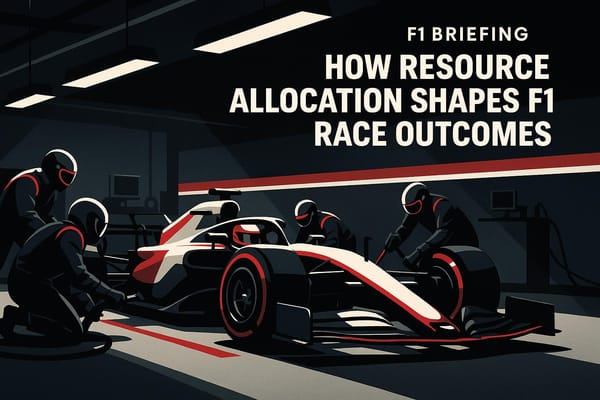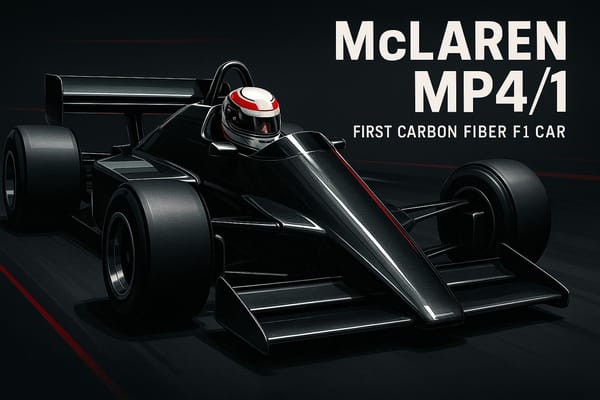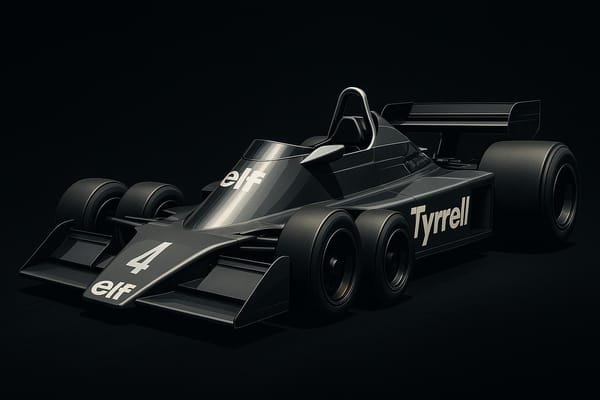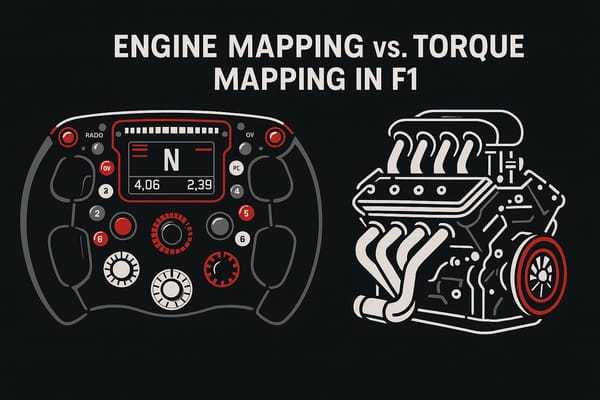How Drivers Shape Race Strategies
Explore how drivers influence race strategies in Formula 1 through real-time feedback, pre-race preparation, and data-driven decisions.

Formula 1 drivers do much more than drive fast - they are key partners in creating race strategies. Here's how they contribute:
- Pre-Race Feedback: Drivers provide critical input about car setup, tire behavior, and track conditions during practice sessions. This feedback helps engineers refine car performance and tailor strategies.
- Real-Time Adjustments: During the race, drivers communicate constantly with their teams, reporting on tire wear, track conditions, and competitor tactics. This allows for quick strategy changes, like timing pit stops or adjusting fuel usage.
- Tire and Pace Management: Drivers monitor tire degradation and manage their pace to optimize pit stops and maintain competitive lap times.
- Weather and Track Decisions: Drivers are often the first to detect changes in weather or track conditions, helping teams make timely decisions about tire changes or adjustments.
In short, drivers are the bridge between technology and human intuition, shaping strategies that can make or break a race. Their insights, combined with team data, ensure strategies are flexible and effective.
How Formula 1 Race Strategies Work [F1 Explained]
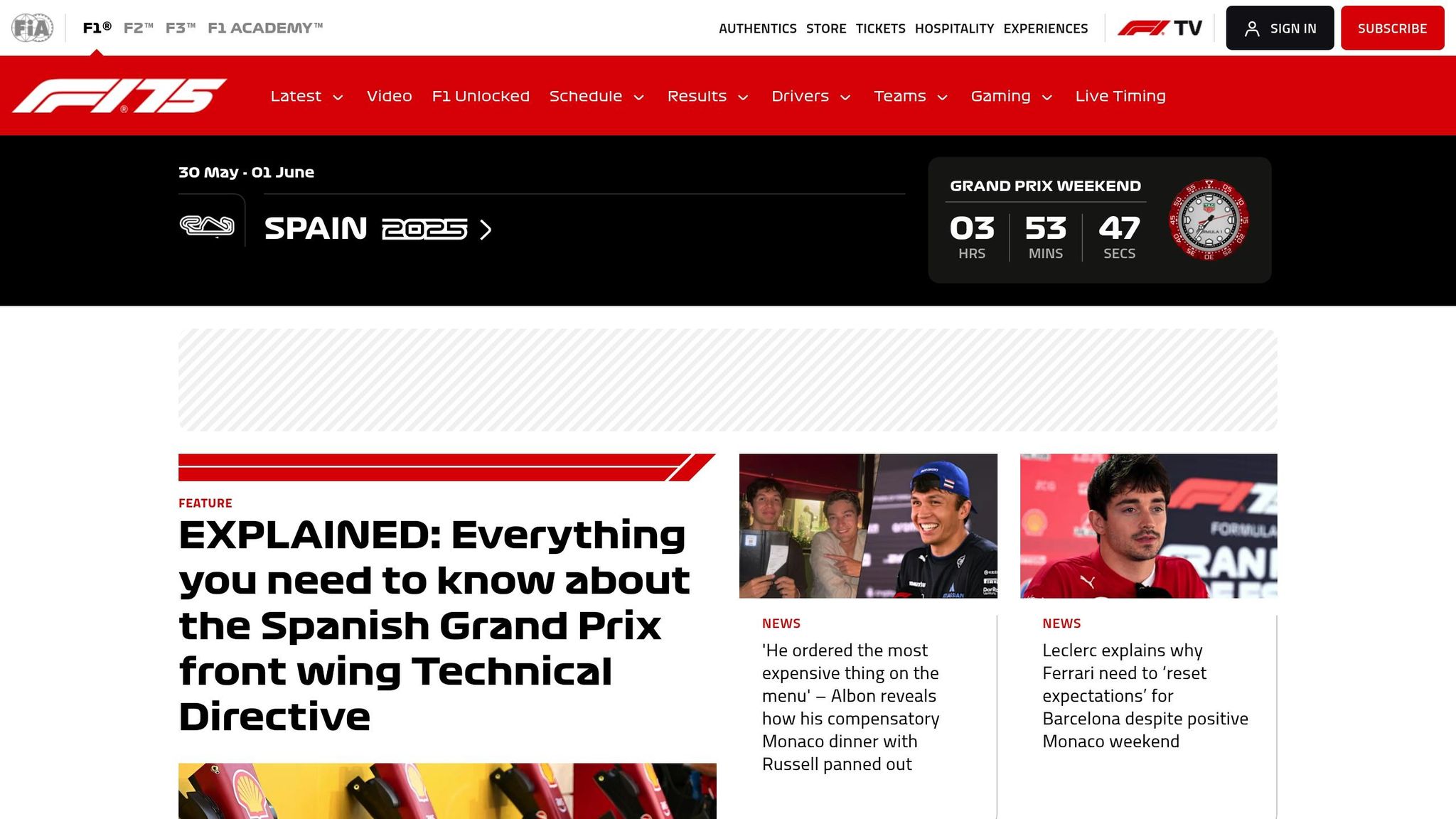
Pre-Race Contributions: Building the Strategy Foundation
Pre-race sessions are where the groundwork for race day is laid, blending technology with human expertise. While telemetry and simulations provide a wealth of raw data, drivers act as the bridge, interpreting this information and shaping it into actionable strategies. These sessions are critical for fine-tuning both the car's setup and the overall race plan, making the driver's role indispensable in transforming data into decisions that can lead to victory.
Driver Feedback on Car Setup and Track Conditions
Practice sessions are more than just warm-ups - they’re an essential collaboration between drivers and engineers to optimize the car's performance. Drivers provide detailed feedback on setup adjustments, which is crucial for ensuring the car performs at its peak. This input not only builds the driver’s confidence but also broadens the range of strategic options available on race day.
Communication between drivers and engineers is at the heart of this process. Romain Grosjean explains the challenge of turning sensations into technical data:
"It's all about translations, various translations. It's not an easy thing. For me as a driver I have to translate how I feel in the car to words, then translate that to the engineer, and then the engineer has to translate that into something which makes sense in terms of the data."
Race engineer Gary Gannon echoes this sentiment, emphasizing the importance of driver input:
"First of all on the technical side, we have a lot of the car but the feedback from the driver is essential to understand what the biggest problem is. I could go through all the data but that isn't going to tell me what's preventing him from taking a corner in a certain way, so that's essential."
Drivers use practice sessions to familiarize themselves with the track, test car components, and ensure the setup meets their needs. Their feedback during these sessions allows teams to refine strategies further through simulation testing.
Driver Input in Simulation Testing and Strategy Planning
Simulators play a massive role in modern F1 strategy development, with teams relying on them heavily before even arriving at the circuit. Simulator drivers, like Nick Yelloly of Aston Martin, dedicate significant time - about 40–50 days annually - to testing new components and validating strategies. These simulators operate with minimal latency (3–5 ms), providing highly realistic conditions for testing.
Yelloly explains how simulators are used not just for lap time optimization but for evaluating new parts:
"Typically, it will be about trying new parts that they create in their software and modelling before we go and put them in the wind tunnel, or even CFD, to see if directionally that is correct or not."
To ensure simulations are as accurate as possible, simulator drivers adapt their driving styles to mimic race drivers. This includes replicating gear usage, cornering techniques, and racing lines. Yelloly highlights the importance of this adaptability:
"It's something that I learnt to do quite early on. Even the different gear usages: some people may attack the corners more and not worry about the exit much, and vice versa. Also, different lines and corner radii that each driver takes, I have to adapt to them."
This meticulous preparation ensures teams arrive at the track with a clear understanding of how to tailor setups for the circuit’s unique demands.
Track-Specific Setup Changes Based on Driver Input
Every F1 circuit presents its own challenges, requiring specific adjustments to the car’s setup. Drivers play a key role in identifying these needs, helping engineers fine-tune elements like car balance, aerodynamics, and suspension to suit both the track and the driver’s preferences.
These adjustments also take into account performance and wear during practice sessions. Tire behavior is another critical factor, with drivers providing feedback on how different compounds handle varying track surfaces and weather conditions. This input directly shapes pit stop strategies and tire choices for the race.
In-Race Influence: Real-Time Strategy Changes
Once the race is underway, drivers become the heartbeat of real-time strategy, feeding their teams with crucial data that shapes every decision. The connection between the driver and the race engineer becomes vital, as they navigate constantly changing conditions with clear and immediate communication. This relationship drives adjustments not only in tire management but also in pit strategies that can define the race.
As Silvia Schweiger puts it:
"The driver and track engineer (the link between the driver and the rest of the team) communicate continuously by radio throughout the GP and update the race plan depending on what is happening on the track or any external happenings, from weather to possible information from other opponents."
This ongoing exchange ensures that strategy is guided by real-world dynamics, not just pre-race simulations.
Reporting Tire Wear and Degradation
Tire management is a cornerstone of modern F1 strategy, and drivers play a key role in providing their teams with detailed feedback about tire conditions. While telemetry delivers hard data - like tire temperatures and performance metrics - drivers offer a more nuanced perspective, describing grip levels and degradation patterns.
Before the race, teams create tire degradation models to guide their approach. But these models often require real-time adjustments based on the actual conditions during the race. Drivers report critical issues like sliding, overheating, or a loss of grip, enabling their teams to fine-tune pit stop timing and overall strategy.
Drivers also share insights on how the tires are performing across different parts of the car, like the balance between front and rear grip, or how the tires handle specific corners. This feedback helps teams decide whether to conserve tires or push for faster lap times.
When drivers report excessive tire wear, teams may instruct them to adopt tire-saving techniques. For example, "lift and coast" helps reduce stress on the tires, while brake bias adjustments can warm tires more effectively through rim heating. These strategies, informed by driver input, allow teams to keep tires in their optimal performance window for as long as possible.
Spotting Undercut and Overcut Opportunities
A driver’s ability to assess track position and report on tire performance is crucial when it comes to timing pit stops. Their input directly influences whether teams attempt an undercut or overcut strategy.
Take the 2021 Bahrain Grand Prix, for instance. After Lewis Hamilton lost the lead to Max Verstappen on the first lap, Mercedes relied on Hamilton’s feedback to adjust their approach. They executed an undercut by pitting Hamilton four laps earlier than Verstappen, allowing him to regain the lead by lap 18.
But not every undercut works out. In the 2021 Monaco Grand Prix, Hamilton tried to undercut Pierre Gasly but couldn’t generate enough heat in his fresh tires, resulting in slower lap times. Gasly, managing his used tires well, maintained his position. Meanwhile, Sebastian Vettel extended his stint and emerged ahead of both drivers after his pit stop.
These strategies demand precision. A driver must perfectly hit their marks in the pit box, where even milliseconds count. Pit stops can range from McLaren's record-breaking 1.80 seconds to a more typical 2.2 seconds. For an overcut to work, drivers need to maintain competitive lap times on worn tires, while an undercut relies on maximizing the immediate advantage of fresh rubber.
Driver feedback during these moments is invaluable, setting the stage for further strategy adjustments as weather and track conditions evolve.
Making Weather and Track Condition Decisions
Weather changes can flip a race on its head, and drivers are often the first to notice subtle shifts that telemetry might miss. Teams rely on a combination of weather forecasts, track temperature data, and driver reports to make split-second calls about tire changes and pit stops.
Drivers, experiencing the track firsthand, can identify details like standing water, grip variations across racing lines, or visibility issues. These observations are critical for teams to make accurate, real-time decisions.
The challenges are immense. Cockpit temperatures can soar to 140°F, causing drivers to lose up to 3 kg in sweat during a race. When drivers report traction loss or aquaplaning, teams must act quickly to adapt.
Track temperature swings can also be dramatic. For example, overcast skies can drop the track temperature by as much as 68°F (20°C) compared to sunny conditions. These fluctuations have a significant impact on tire performance and grip, making driver input essential for translating raw data into actionable strategies.
Throughout the race, while teams monitor the track’s evolution, it’s the driver’s ability to communicate changes in car handling and track conditions that keeps strategies sharp and adaptable. Their feedback is what allows teams to stay ahead of the unpredictable twists of a Grand Prix.
Driving Techniques that Impact Strategy
Drivers rely on specific techniques that directly influence race strategies. These skills go beyond sheer speed, demanding precision, discipline, and a sharp awareness of how each decision fits into the broader race plan. When mastered, these techniques give teams the adaptability needed to make split-second strategic decisions that can define race outcomes.
Energy and Fuel Management
Modern Formula 1 cars operate under stringent fuel regulations, with a maximum allowance of 110 kg per race and fuel flow monitored 2,200 times per second. This means drivers must carefully manage fuel consumption, often using techniques like "lift and coast." By easing off the throttle before braking zones, drivers can conserve fuel without sacrificing too much lap time. Aggressive use of the throttle burns through fuel quickly, so gradual acceleration becomes a critical part of the strategy. Teams also collaborate with drivers to fine-tune engine maps and power settings, ensuring performance and efficiency stay balanced throughout the race.
"Fuel efficiency is not merely about conservation; it's about mastering the melody of performance in a complex and ever-evolving composition." – Ludis Analytics
The complexity increases with hybrid power units and energy recovery systems. Drivers must decide the best moments to deploy recovered energy, whether for overtaking or defending their position. This aligns with Formula 1's broader sustainability goals, including its aim to achieve net-zero carbon emissions by 2030. Additionally, teams sometimes adopt a "short-fueling" strategy, starting with less fuel to gain an early speed advantage, then relying on fuel-saving techniques as the race progresses.
Pace Control for Pit Stop Timing
Managing pace isn't just about raw speed - it’s about being quick at the right times. Drivers aim to create and maintain gaps that ensure smooth pit stop exits, avoiding traffic that could cost precious seconds. With the average race featuring two pit stops and pit stop times as fast as 1.92 seconds (recorded at the 2013 USA Grand Prix), the stakes are incredibly high.
Recent races show how precise pace control during pit stop windows can make or break a race. Drivers must balance pushing hard to gain positions with conserving tire life, making critical decisions about when to attack and when to hold back. This balance ensures optimal timing for pit stops while setting the stage for defensive and overtaking strategies.
Overtaking and Position Defense Tactics
Every overtaking move or defensive maneuver carries consequences that ripple through the race strategy. These actions are informed by real-time feedback from drivers, who weigh factors like tire wear and fuel levels to ensure their moves align with the overall race plan.
One key tool in modern racing is the Drag Reduction System (DRS), which can boost speeds by 10–12 mph on long straights. The strategic use of DRS is vital. For example, during the 2023 Singapore Grand Prix, Carlos Sainz expertly managed his DRS to fend off a Mercedes challenge and maintain his lead. However, DRS isn’t always a guaranteed advantage. In some situations, "DRS trains" form, where multiple cars benefit from DRS simultaneously, making overtaking nearly impossible and forcing teams to explore alternative strategies like undercuts.
Defensive driving is equally critical but comes with risks. Aggressive defensive moves can accelerate tire wear, potentially forcing an earlier pit stop that disrupts the team's strategy. Safety car periods add another layer of complexity. A pit stop under green flag conditions costs about 20 seconds, compared to roughly 12 seconds during a safety car period. This timing can influence whether a driver chooses to fight for position or conserve tires for a better opportunity later in the race.
A standout example of strategic overtaking comes from Sebastian Vettel's win at the 2019 Singapore Grand Prix. Vettel pitted from third place ahead of Charles Leclerc and Lewis Hamilton, using fresh tires to deliver a blistering outlap that vaulted him into the lead. This decisive move secured his 53rd and final F1 victory.
These techniques highlight that success in modern Formula 1 is about far more than speed. From conserving fuel with precise throttle control to leveraging DRS for overtaking, every decision a driver makes has a direct impact on the team's ability to execute a winning strategy.
Post-Race Analysis: Improving Future Strategies
After the race, drivers, engineers, and strategists dive into performance data and feedback to refine their approach for future races. This collaborative process creates a cycle of continuous improvement, with detailed debrief sessions scrutinizing every decision and fraction of a second.
Driver Debrief Sessions and Data Review
Post-race debriefs bring together drivers, engineers, and strategists to analyze every aspect of performance. Teams break down lap times, fuel usage, tire wear, and driver feedback to uncover areas for improvement. By combining driver insights with telemetry data, they get a clearer picture of how the car performed and how strategies played out.
Telemetry plays a central role here. Formula 1 cars generate a staggering 400 GB of data during a single race, capturing details like throttle positions, braking patterns, speed changes, and power management. Comparing this data with driver feedback often reveals nuances that might otherwise go unnoticed. Video footage also adds another layer of analysis, helping teams identify issues that raw data might miss. For example, during the 2022 Melbourne Grand Prix, telemetry alerted George Russell's engineering team to an overheating engine, prompting real-time adjustments to cool the car and manage turns more effectively.
"You're constantly re-evaluating your strategy, the same way you've been doing in the three months since picking the tyres." - Bernadette Collins, Senior Strategy Engineer, Racing Point
Strategists also review their predictive models to see how they matched up with the actual race. By assessing what worked and what didn’t, and even analyzing rivals' strategies, teams gain valuable insights into the competitive landscape.
Using Past Performance Data for Future Planning
Driver-specific data is a treasure trove for shaping future race strategies. Teams study individual patterns to improve consistency and shave seconds off lap times. Beyond just explaining past results, these insights help craft strategies for the next race.
Teams also look at how drivers handle specific scenarios, like defending against an undercut or managing tires during critical phases. This helps predict future performance and refine strategies. Additionally, telemetry data highlights areas where drivers can improve. For example, if a driver consistently struggles with certain corners or tire degradation, teams can create targeted practice sessions or simulator drills to address these challenges.
Building Driver-Team Communication and Trust
Long-term success in Formula 1 depends heavily on the trust and communication between drivers and their teams. Open and honest feedback during debriefs allows teams to make smarter strategic decisions. This improved communication doesn’t just influence post-race analysis - it impacts pre-race planning and in-race adjustments, creating a continuous feedback loop.
Daniel Ricciardo emphasizes how critical communication is in modern Formula 1:
"Where I'm good with my driving? Feedback. I think I'm really good at feeling what the car does and relaying that back to the team. I'm able to give detailed real-time feedback to my team during the race to optimize the performance of the car. That's one of my superpowers." - Daniel Ricciardo
Clear communication is essential for executing race strategies effectively. Whether it’s pit stop timing, tire management, or mid-race adjustments, the ability to relay detailed feedback in real time makes all the difference. This collaboration extends beyond race day, too. Drivers provide input after practice and qualifying sessions, helping engineers fine-tune the car’s setup for maximum performance.
Over time, this partnership helps teams strike the right balance between aggressive and cautious strategies, weighing risks against potential rewards. Ruth Buscombe, Senior Strategy Engineer at Alfa Romeo, captures this mindset perfectly:
"Strategy is 98 percent preparation, and not the high-speed chess you get to see on TV, which is – as with most jobs – the tip of the iceberg"
"It's like playing poker, in that you have to back yourself to make good decisions, rather than good outcomes"
This approach underscores how post-race analysis is a cornerstone of continuous strategic refinement for Formula 1 teams.
Conclusion: Drivers as Key Strategy Partners
Formula 1 drivers are far more than just experts at handling high-speed machines - they play a crucial role in shaping race strategy from start to finish. While data provides an essential foundation, it’s the driver’s intuition that transforms raw numbers into actionable plans. As Romain Grosjean points out, drivers face the unique challenge of converting their on-track sensations into technical feedback that engineers can use effectively. This ability to bridge the gap between feeling and data makes drivers indispensable.
The collaboration between drivers and strategists is a dynamic process that evolves throughout a race weekend. Strategists may focus on the bigger picture - maximizing car performance and planning for the best possible outcome - but it’s the driver’s real-time input that brings these plans to life. Whether it’s identifying opportunities for an undercut, managing fuel consumption, or adapting to sudden weather changes, drivers provide the critical insights that can turn a solid strategy into a winning one.
Tom McCullough, Aston Martin's Performance Director, underscores the importance of this teamwork:
"Responsible for the preparation, implementation and analysis of race strategies, a strategy engineer works closely with tire engineers, race engineers, drivers and anyone with input at a senior level, to play out as many scenarios as possible to devise the optimal plan for a race."
This kind of collaboration isn’t limited to pre-race preparation. It continues through every phase of the weekend, ensuring that strategies remain flexible and responsive. Teams that succeed understand that strategy is a two-way conversation. They create an environment where drivers feel confident sharing honest feedback - even in the high-pressure moments of a race. This trust enables teams to adjust plans on the fly, turning unexpected challenges into competitive advantages.
Ultimately, it’s the blend of human intuition and cutting-edge data that defines success in Formula 1. Drivers don’t just execute strategies - they shape and refine them. In a sport where fractions of a second can make all the difference, this human touch is often the decisive factor that separates good outcomes from great ones.
FAQs
How does a driver’s feedback during a race impact strategy decisions like pit stops and tire changes?
A driver’s real-time feedback is key to refining race strategies, particularly when it comes to decisions about pit stops and tire management. By sharing observations on tire wear, car handling, or track conditions, drivers offer their teams insights that go beyond what raw data can reveal. For instance, if a driver senses their tires are wearing out quicker than anticipated, the team can tweak the pit stop schedule to keep performance sharp and prevent losing precious time on the track.
This ongoing dialogue between drivers and their teams keeps strategies flexible and responsive. From adjusting to sudden weather shifts to countering competitors’ moves, the combination of driver input and team analysis is what drives success during a race.
How do simulators and drivers work together to shape race strategies in Formula 1?
Simulators have become an indispensable part of Formula 1, giving teams a way to test and refine race strategies in a controlled virtual setting. These high-tech systems allow teams to study track layouts, fine-tune car setups, and simulate a variety of race conditions. This helps them make smarter decisions about tire management, pit stop timing, and fuel usage. By running a wide range of simulations, teams can predict how different strategies might unfold under specific circumstances, offering a crucial advantage when it’s time to hit the track.
Drivers are central to this process, offering detailed feedback during simulator sessions. Their observations help engineers understand how the car behaves in different scenarios, allowing strategies to be customized to both the car’s capabilities and the driver’s preferences. On race day, drivers add another layer of insight by reporting on tire wear and track conditions in real time. This constant flow of information helps teams make quick adjustments, ensuring strategies remain grounded in data while staying flexible enough to adapt to the ever-changing dynamics of a race.
How do F1 drivers maintain speed while managing fuel and energy during a race?
In Formula 1, drivers face the challenge of balancing raw speed with careful fuel and energy management to stay competitive throughout the race. One key technique they use is lift and coast - easing off the throttle before braking. This approach helps conserve fuel without losing too much momentum. Additionally, drivers tweak throttle inputs and switch engine modes based on team strategies and changing race conditions.
Today's F1 cars are powered by hybrid engines featuring advanced energy recovery systems (ERS). These systems capture energy from braking and exhaust heat, storing it for later use. This technology allows drivers to maximize power output while keeping fuel consumption in check, enabling them to push their cars hard without risking running out of resources before crossing the finish line.

